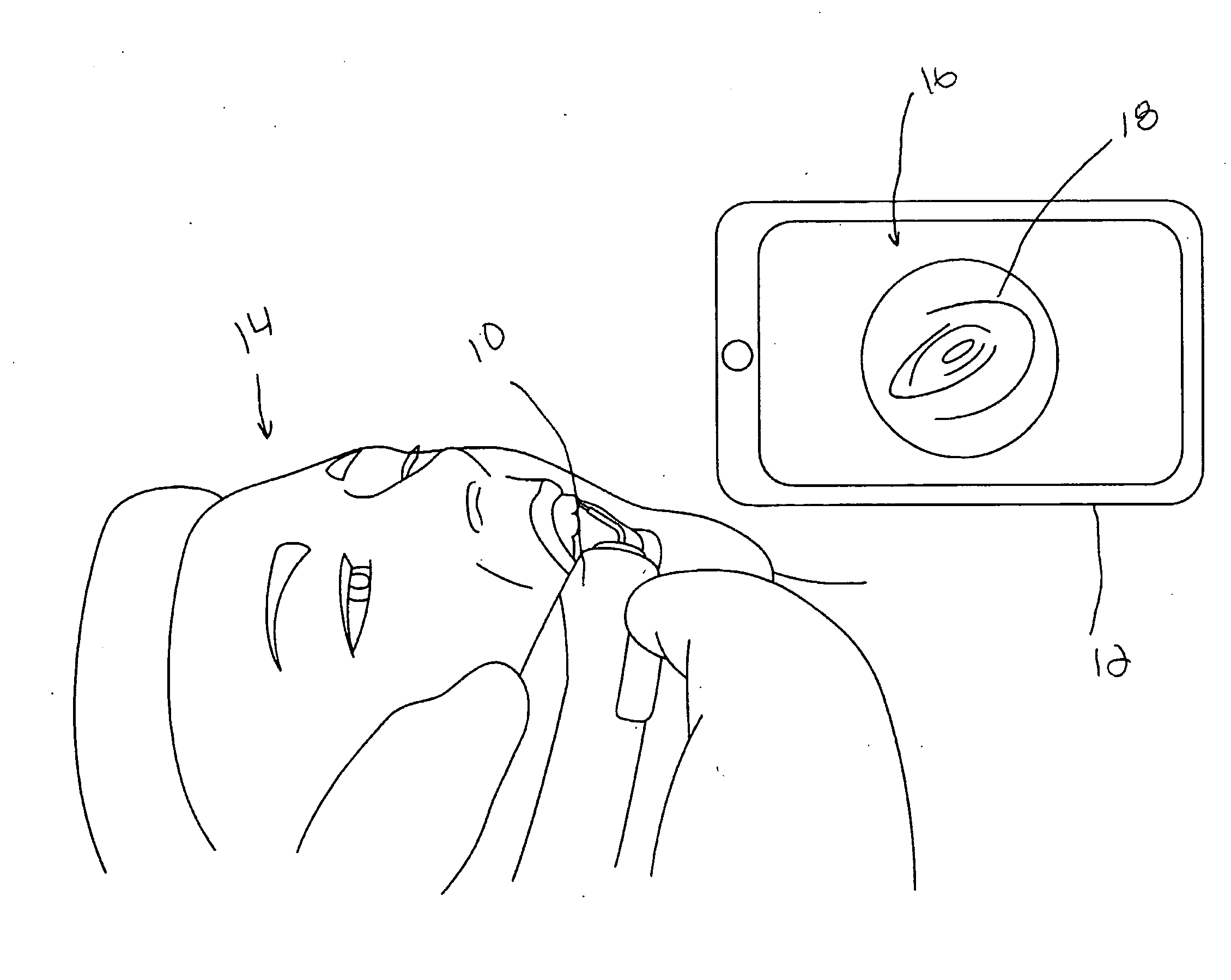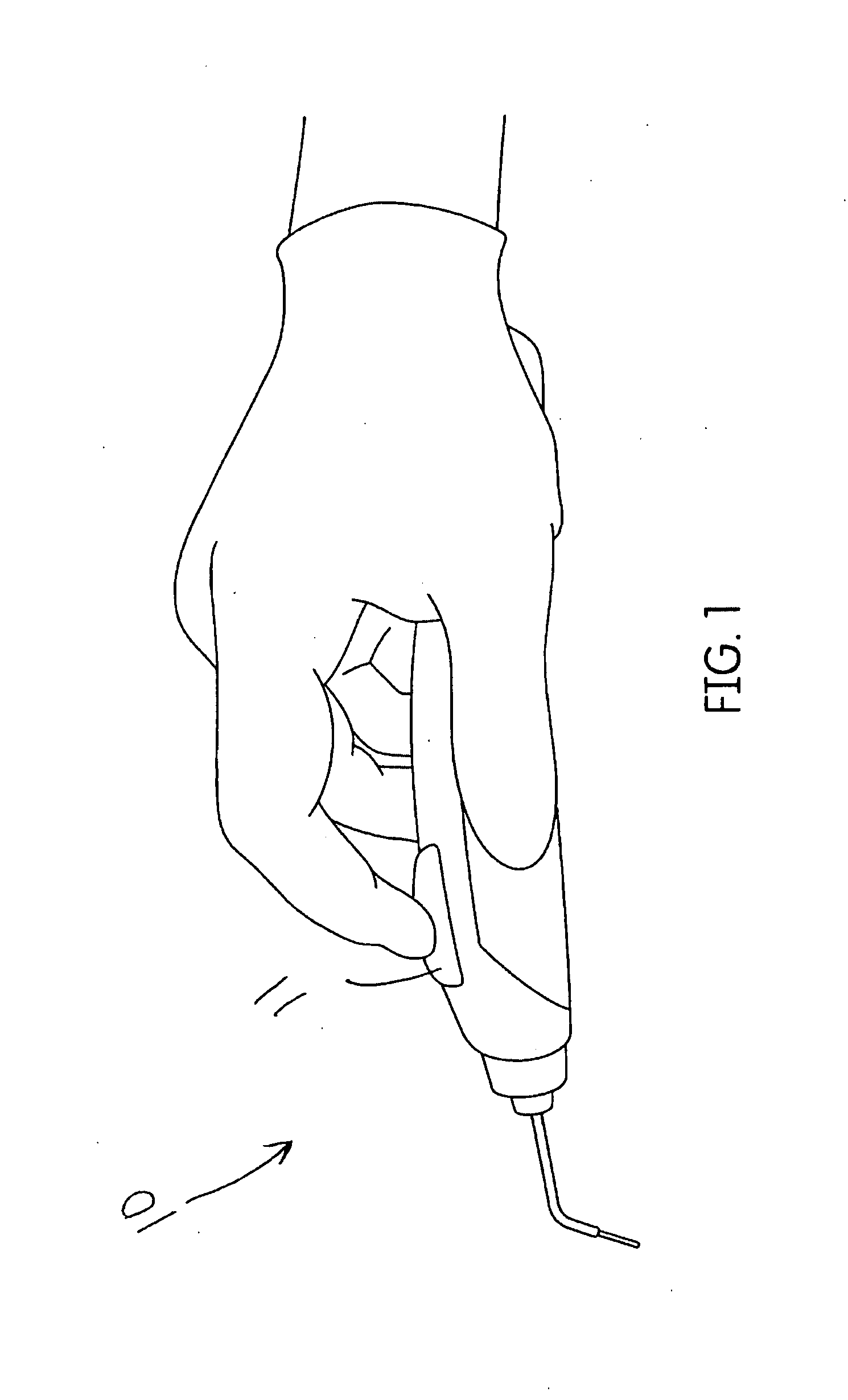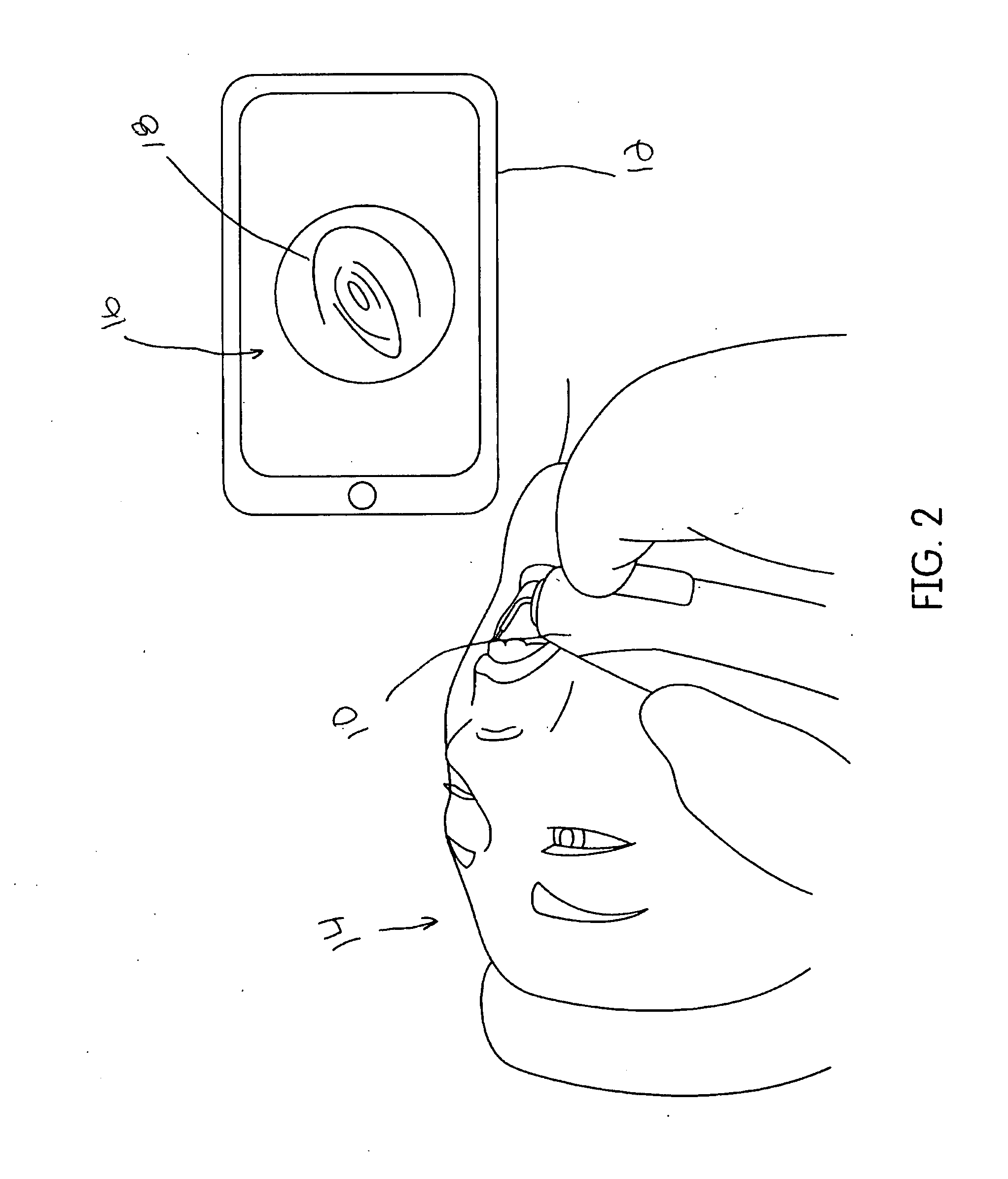Inspection of dental roots and the endodontic cavity space therein
a technology of endodontic cavity space and endodontic root, which is applied in the field of dental microendoscope, can solve the problems of slowing down a clinical procedure, difficult to negotiate or clean, and insufficient conventional microscopes currently availabl
- Summary
- Abstract
- Description
- Claims
- Application Information
AI Technical Summary
Benefits of technology
Problems solved by technology
Method used
Image
Examples
Embodiment Construction
[0042]The present invention may provide an endoscopic handpiece assembly. More particularly, the present invention may provide a mini endoscopic handpiece assembly with a removable protective end portion (e.g., disposable guide tube) for illuminating and / or displaying and / or recording (either simultaneously, periodically, in combination, or separately) a root canal and / or cavity within a tooth or patient's oral cavity through a fiber optic cable or otherwise (e.g., micro-fiberscope attached to the body of the endoscopic handpiece assembly. It is appreciated that the endoscopic handpieces of the present invention may simultaneously illuminate and display inner cavity spaces of root canals during, in between, and / or after treatment of a root canal (e.g., cleaning and / or shaping of a root canal).
[0043]It is contemplated that in a live treatment case, the tooth of a patient undergoing an endodontic root canal treatment may be prepared using standard procedures whereby the infected pulp ...
PUM
 Login to View More
Login to View More Abstract
Description
Claims
Application Information
 Login to View More
Login to View More - R&D
- Intellectual Property
- Life Sciences
- Materials
- Tech Scout
- Unparalleled Data Quality
- Higher Quality Content
- 60% Fewer Hallucinations
Browse by: Latest US Patents, China's latest patents, Technical Efficacy Thesaurus, Application Domain, Technology Topic, Popular Technical Reports.
© 2025 PatSnap. All rights reserved.Legal|Privacy policy|Modern Slavery Act Transparency Statement|Sitemap|About US| Contact US: help@patsnap.com



